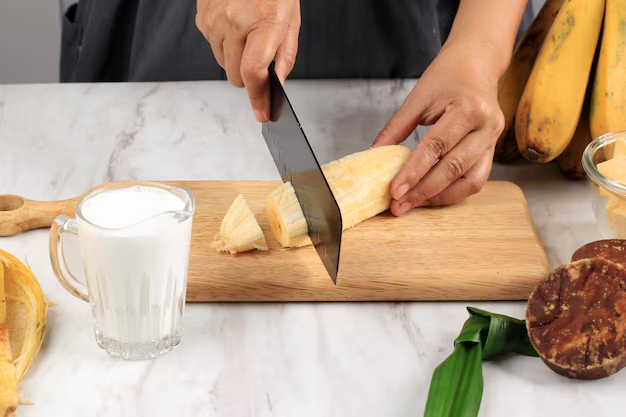How Long Can Sliced Cheese Stay Fresh in Your Fridge?
Have you ever found yourself reaching for that tempting packet of sliced cheese, only to pause and wonder about its freshness? You're not alone! Recognizing when your sliced cheese is past its prime can be tricky, but understanding how to properly store it can help extend its shelf life. This guide will cover everything you need to know about keeping your sliced cheese fresh and flavorful for as long as possible. 🧀
Understanding Cheese Shelf Life
The Shelf Life of Sliced Cheese
Sliced cheese, whether pre-packaged or freshly sliced from a deli, varies in shelf life depending on the type. Generally, hard cheeses tend to last longer than soft cheeses due to their lower moisture content. Knowing these lifespans can help you gauge freshness:
Hard Cheeses (e.g., cheddar, Swiss):
- Can last up to 3-4 weeks in the refrigerator.
Semi-Soft Cheeses (e.g., provolone, mozzarella):
- Typically remain good for 2-3 weeks when stored properly.
Soft Cheeses (e.g., brie, feta):
- Have a shorter shelf life of 1-2 weeks.
Understanding these general guidelines can assist you in planning consumption while reducing waste.
Factors Influencing Cheese Longevity
Several factors can affect the shelf life of your sliced cheese:
- Moisture Content: Higher moisture equals a shorter shelf life.
- Packaging: Vacuum-sealed packaging extends freshness.
- Storage Temperature: Optimal refrigeration slows spoilage.
- Handling: Minimized exposure to air and contaminants preserves quality.
Proper Storage Techniques
Refrigeration Tips
Keeping cheese fresh requires more than just placing it in the fridge. Here are some effective storage tips:
Wrap it Right: For opened packages, tightly wrap the cheese in wax paper or parchment before sealing it in a plastic bag or airtight container. This helps maintain moisture without trapping too much humidity.
Temperature Matters: Store cheese in the main compartment of your refrigerator. Avoid the door as it experiences temperature fluctuations.
Separation Advice: Keep different cheeses separate to prevent flavor mingling. This is especially important for stronger varieties that can alter the flavor profile of milder cheeses.
Signs Your Cheese Isn't Fresh
Understanding the signs of cheese spoilage is crucial for both health and taste:
Mold Growth: While mold is often a natural part of cheese aging, any mold appearing on sliced cheese, especially soft cheeses, can indicate spoilage.
Texture Changes: Hardened edges or a slimy surface suggest the cheese is no longer fresh.
Off Smell: An unpleasant odor distinct from the cheese's typical aroma is a clear indicator of spoilage.
React quickly to these signs by discarding any cheese that shows these spoilage markers.
Preserving Flavor and Safety
Can You Freeze Sliced Cheese?
For those seeking to extend shelf life further, you might consider freezing sliced cheese. Although not ideal for all types, some cheeses freeze well:
Good Candidates for Freezing: Hard and semi-hard cheeses like cheddar and provolone can be frozen with minimal texture change.
Poor Candidates for Freezing: Soft cheeses tend to become crumbly and lose flavor when frozen.
When freezing, wrap slices individually to make thawing practical and prevent clumping.
Reusing Cheese Creatively
Even cheese that's past its prime can be salvaged in some creative ways:
Cooking: Incorporate slightly stale cheese into cooked dishes like casseroles or sauces where texture isn't critical.
Melting: Use cheese that has lost its peak freshness in grilled cheese sandwiches or melts where the texture changes from cooking.
Quick Takeaways on Storing Sliced Cheese 📝
- 🧊 Refrigerate smartly: Store cheese away from refrigerator doors to avoid temperature variations.
- 🌡️ Mind the temp: Cheese lasts longest when kept consistently cool.
- 🧀 Freeze wisely: Only freeze hard, sliced cheeses and thaw slowly for best results.
- 🚫 Watch for spoilage signs: Texture, mold, and smell changes are red flags.
Enhancing Your Cheese Experience
Pairing and Serving
The enjoyment of cheese can be elevated through intelligent pairing and serving tips:
Pairing Precision: Match bold cheeses with robust wines or beers, while milder cheeses complement lighter beverages.
Serving Savvy: Allow cheese to come to room temperature before serving to fully appreciate its flavor and texture.
Portion Logistics: Slice only what you plan to consume to keep the remainder fresh.
Avoiding Waste
Reducing cheese waste is both economical and environmentally friendly. Consider implementing the following:
Buy Fresh, Buy Less: Purchase cheese more frequently in smaller quantities to ensure it's consumed while fresh.
Use Every Bit: Incorporate scraps into soups or sauces to minimize waste.
Educate and Share: Teach household members cheese storage best practices to prevent unnecessary spoilage.
Embracing these practices ensures you make the most out of your sliced cheese, enjoying top quality while reducing waste.
Conclusion: Your Ultimate Cheese Storage Guide
In the ever-delicious realm of cheese, proper storage, handling, and awareness of freshness are key to maximizing enjoyment and minimizing waste. By understanding how long different types of sliced cheese last and taking steps to store them properly, you can extend their shelf life and savor every slice. From practical refrigeration tips to creative uses for aging cheese, this comprehensive guide equips you with the knowledge to manage your cheese stash effectively.
Remember, every slice can bring a moment of joy; it's all about keeping them fresh until you're ready to enjoy. Happy cheese storing! 🧀
